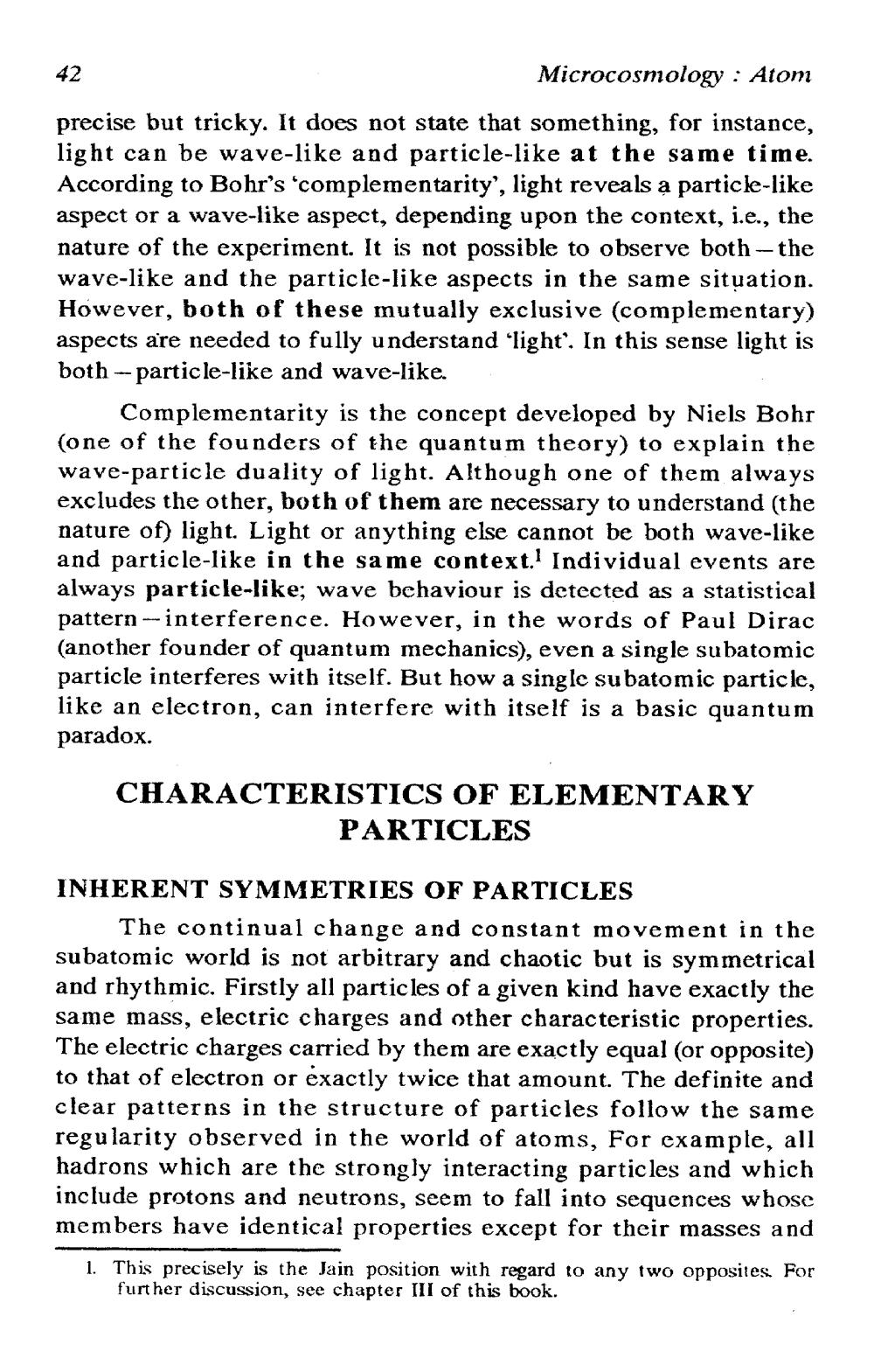________________
42
Microcosmology : Atom precise but tricky. It does not state that something, for instance, light can be wave-like and particle-like at the same time. According to Bohr's 'complementarity', light reveals a particle-like aspect or a wave-like aspect, depending upon the context, i.e., the nature of the experiment. It is not possible to observe both - the wave-like and the particle-like aspects in the same situation. However, both of these mutually exclusive (complementary) aspects are needed to fully understand 'light'. In this sense light is both -- particle-like and wave-like.
Complementarity is the concept developed by Niels Bohr (one of the founders of the quantum theory) to explain the wave-particle duality of light. Although one of them always excludes the other, both of them are necessary to understand (the nature of) light. Light or anything else cannot be both wave-like and particle-like in the same context.' Individual events are always particle-like; wave behaviour is detected as a statistical pattern-interference. However, in the words of Paul Dirac (another founder of quantum mechanics), even a single subatomic particle interferes with itself. But how a single subatomic particle, like an electron, can interfere with itself is a basic quantum paradox.
CHARACTERISTICS OF ELEMENTARY
PARTICLES
INHERENT SYMMETRIES OF PARTICLES
The continual change and constant movement in the subatomic world is not arbitrary and chaotic but is symmetrical and rhythmic. Firstly all particles of a given kind have exactly the same mass, electric charges and other characteristic properties. The electric charges carried by them are exactly equal (or opposite) to that of electron or exactly twice that amount. The definite and clear patterns in the structure of particles follow the same regularity observed in the world of atoms, For example, all hadrons which are the strongly interacting particles and which include protons and neutrons, seem to fall into sequences whose members have identical properties except for their masses and 1. This precisely is the Jain position with regard to any two opposites. For
further discussion, see chapter III of this book.




